Day 9 : 17 Aug 2013 : Part 1 : Turtuk
We woke up in the morning around 0730 and completed our daily rituals. Tea was served in the meantime and having morning tea in the lap of nature with flowers, fruits, butterflies and bees was a devine experience in itself. By 0800 hrs, we were called for the breakfast.

Last night, Rahamatullah had interacted with us briefly and I had complained to him that why we’re getting the regular things to eat as we could have got that anywhere and it were the Balti dishes that we were looking forward to. Rahmatullah explained that generally Balti dishes are too rich and people from plains are not able to digest which results in upset stomach and that’s why they demand usual stuff. But then, were’s the fun when you’re in Ladakh and doing the usual things? Even if the stomach goes topsy-turvy, I believe there are lot of avenues to keep it happy – lot of spaces with lots of water everywhere! Rahamatullah also said that he would accompany us to the village tomorrow and that we should not go back without visiting the village. village? Isn’t where we are staying part of the village? What is he talking about?
So, in the morning, finally we get some authentic Balti dishes in the form of local bread called kisir which is made with buckwheat alongwith curd flavoured with tsamik – a green herb. No! It’s not the mint!! The taste of the bread is somewhat familiar though. Oh yes! Buckwheat is the “kuttu ka aata”! And of course we get a full glass of the sweetest apricot juice!
Some stone carved artifacts at the dining hall.


This is how the camp looks like from the dining hall
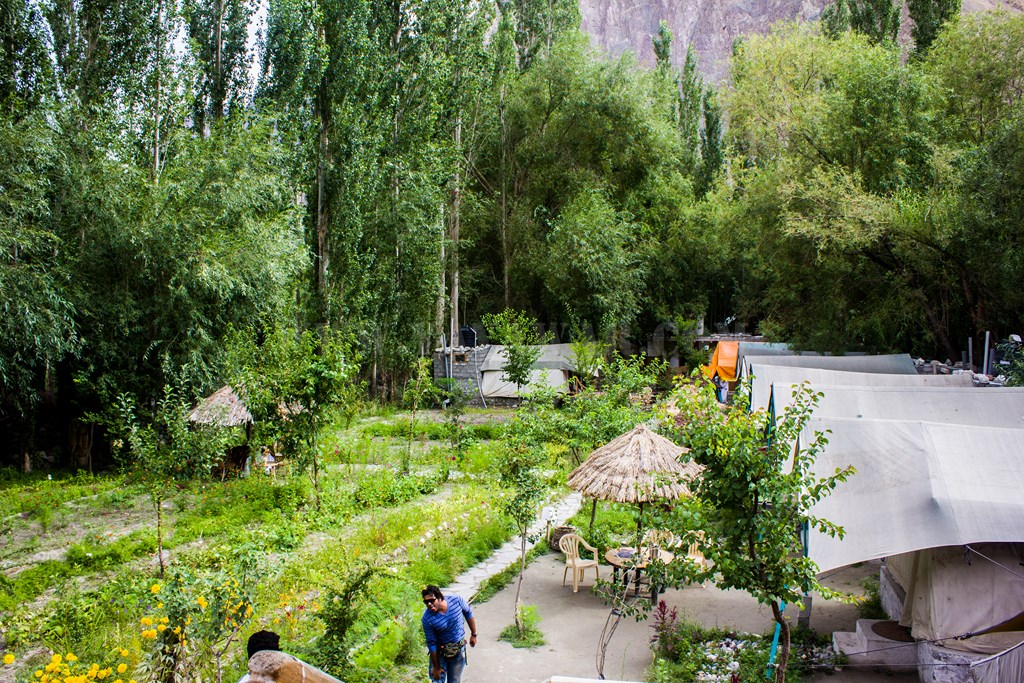
After we finished the breakfast, Rahmataullah approached us to excuse him since he has to go urgently. Apparently, a mosque construction is in full swing and Rahmatullah is the architect for the same and right now, a meeting has been convened which he has to attend. He however, reiterates that we should not leave before visiting the village and that he’d arrange someone to guide us through the village.
So we meet Ghulam Hussain.
Ghulam takes us to the village and the village is located, behold, at top of this!

Can you see two guys on top?
A shot with Ghulam Hussain

We start climbing and half way up, we are already panting. Wonder how do the locals manage their day to day job climbing these, but then probably they are used to. We look back and this is what we see

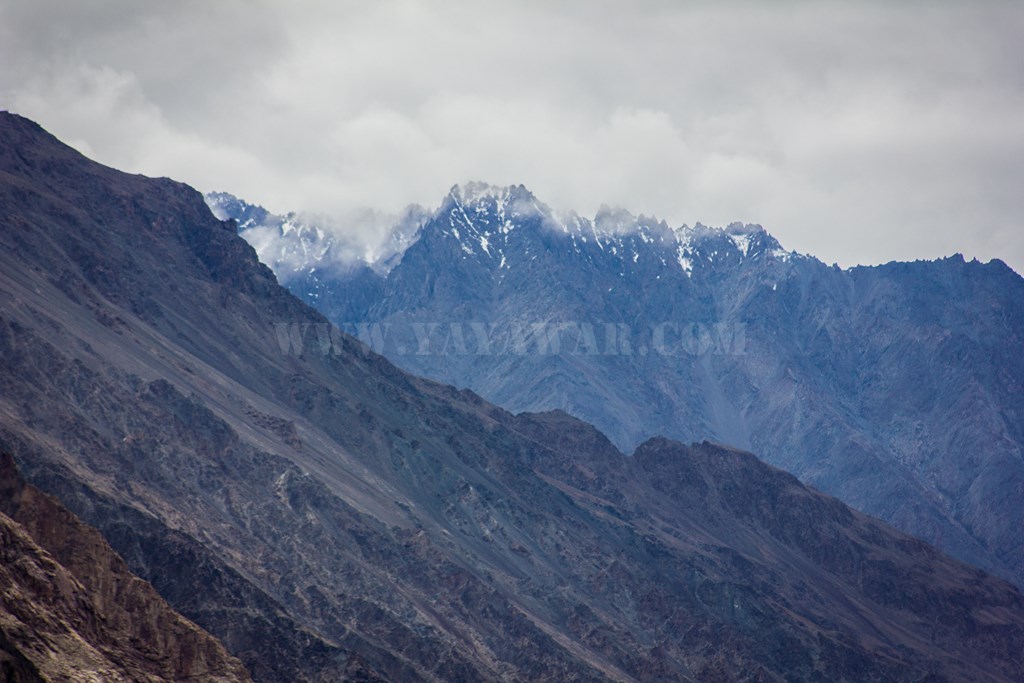
Ghulam explains that Turtuk is situated between two mountain ranges – The Himalayan and the Karakoram, which are separated by a gorge through which the Shyok flows.
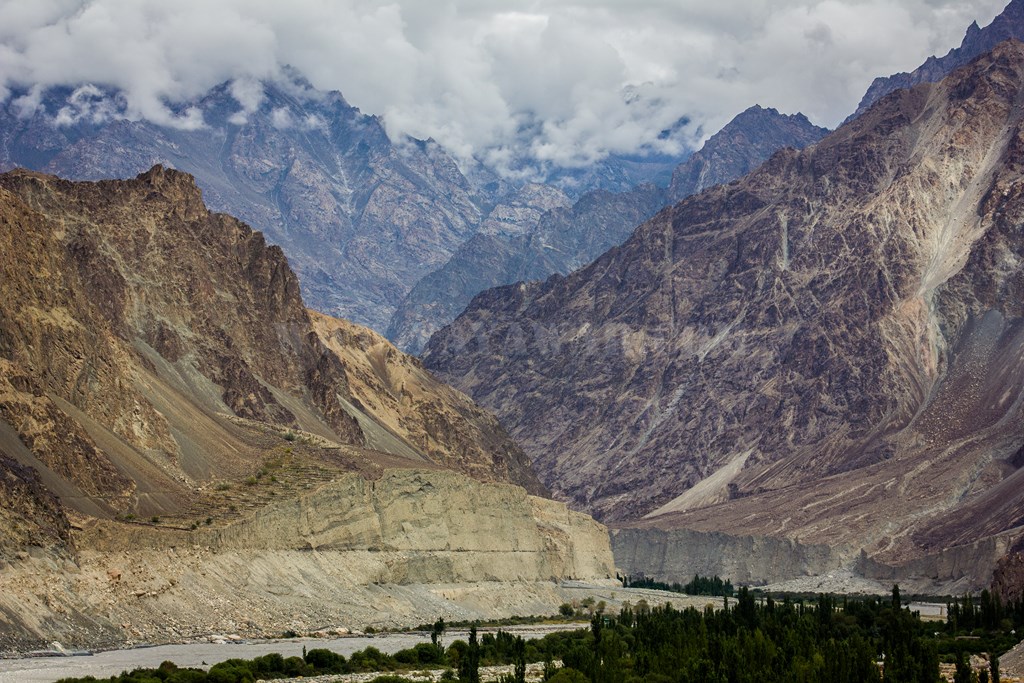
The right one is Karakoram ranges. Behind those clouds is K2 which is visible if there are no clouds. Tough luck!
And we look down to have a look at Shyok

Kids are going to school..

We proceed further and reach the top. The view on the other side is lush green.. and orange!

Everyone who meets us is very friendly and “Juley” is normally what they wish to visitors. However, what they wish amongst themselves, being pre-dominantly Muslims is “Assalaam Wale-i-Qum”. Since one of my best childhood friend happens to be Muslim, I know the culture and therefore it is “Wala-i-Qum Salaam” for me. And then I see friendly smiling faces. People do stop and ask your general well being too.



Agriculture wise, this area grows at least two crops of wheat in an year. So while one crop of wheat has been recently cut and stacked, another crop is already growing



And so is some other crop, forgot to ask the name, perhaps some condiment
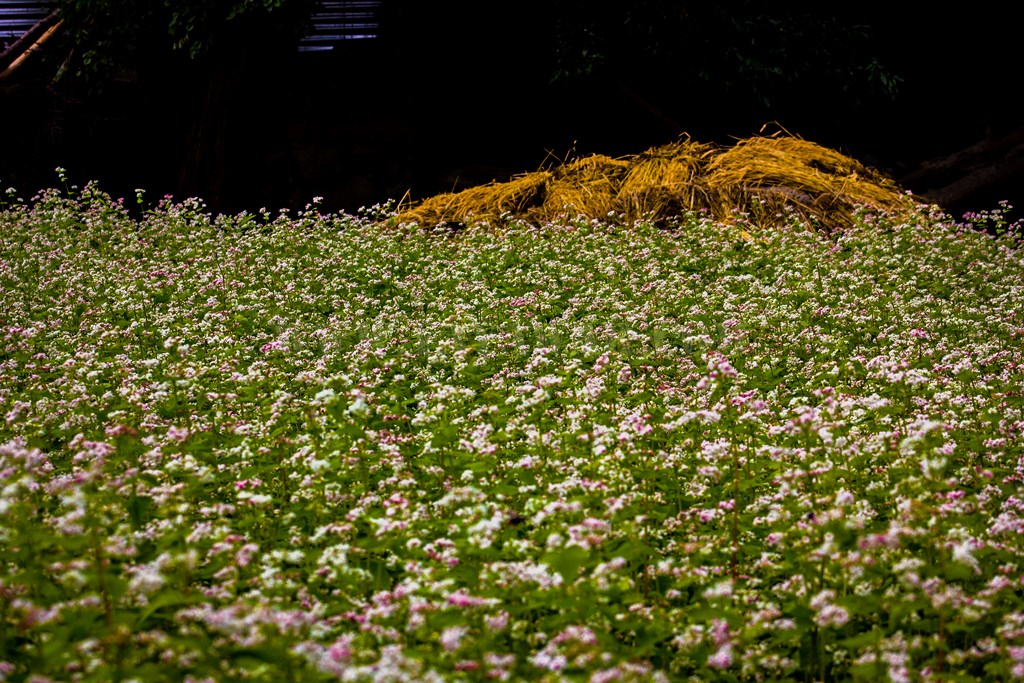
While we meet some more kids going to school.. from their dress, it appears that there are two schools.

We take a left turn and now it’s all orange spread, so low that you can easily pop one with your mouth!

Ghulam encourages us to pluck a few, says that villagers don’t mind. He says that we shall look for the ones that are already breaking, which means that they are ripe. villagers generally spread plasic sheets beneath the trees and wait for the fruit to drop by itself. Then the fruits are dried – on rooftops, on rocks or any place where they get some sunlight. Apricots are also used fresh for juice and jams.
So shall we loose the opportunity? No!

Cheena on the job
On display before being gulped!
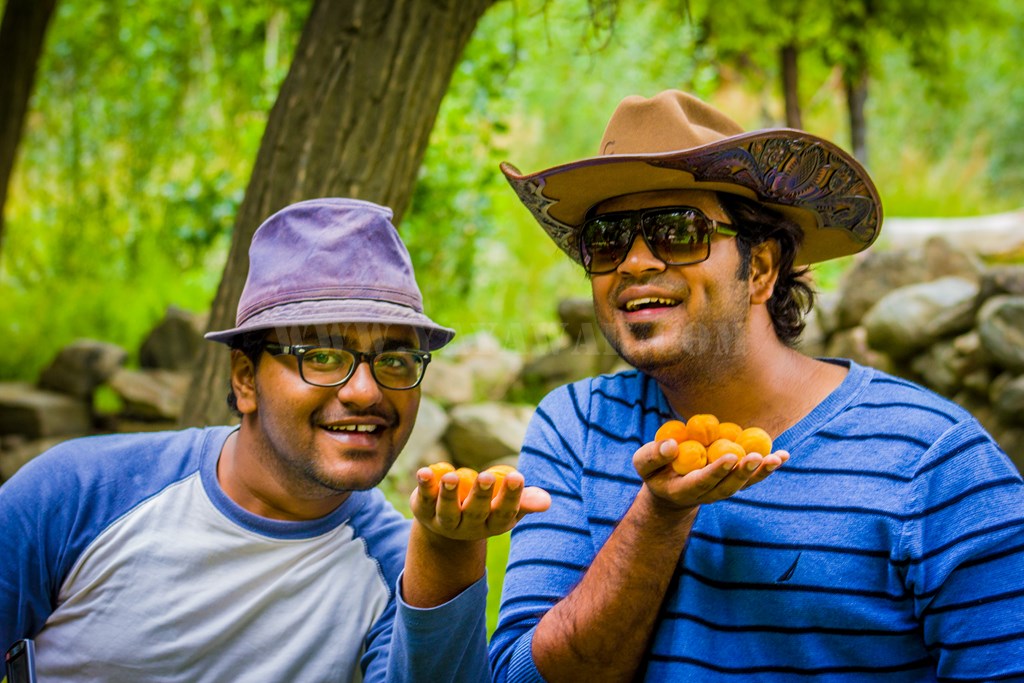
The taste is extraordinary! Eating out ripe apricots straightaway plucked from trees – that too world’s best! Priceless!!
Apart from apricots, mulberry, almonds and walnuts are also grown in Turtuk
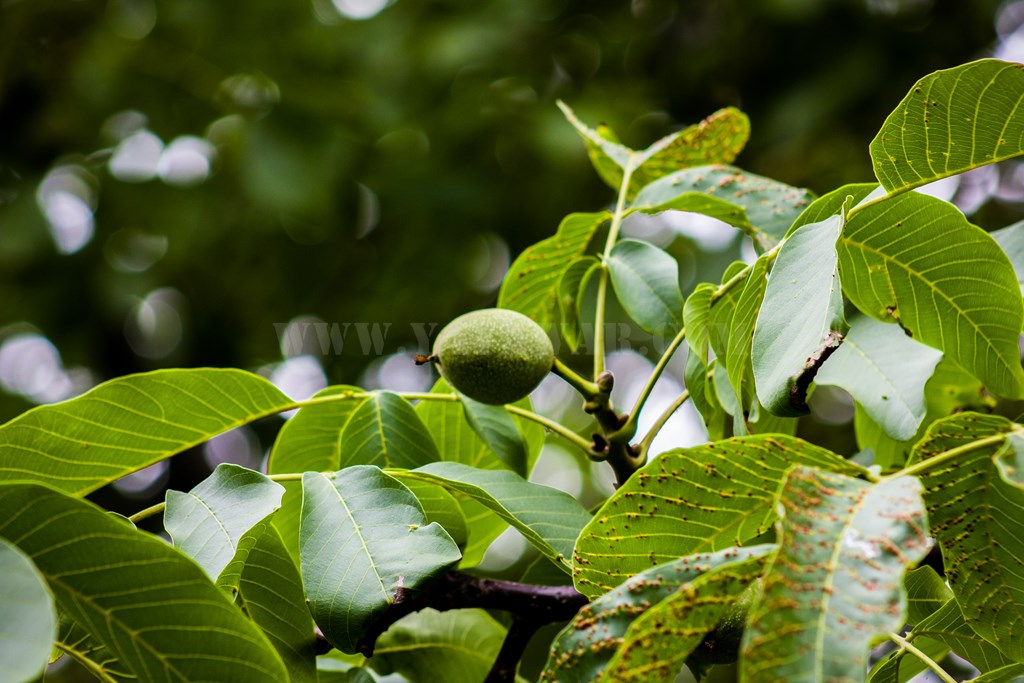
Yes, it’s a walnut. Alas it has too much time to ripe.
We also notice that the chicken here are different.. they’re more like Gray Francolin (Teetar) in colour patterns

We come to know that four major varities of apricots are grown here. Now to us, it doesn’t makes any sense since by looks of it, we can differentiate between the varieties.
We click nonethless!

And we also click weeds and shrubs in frenzy.
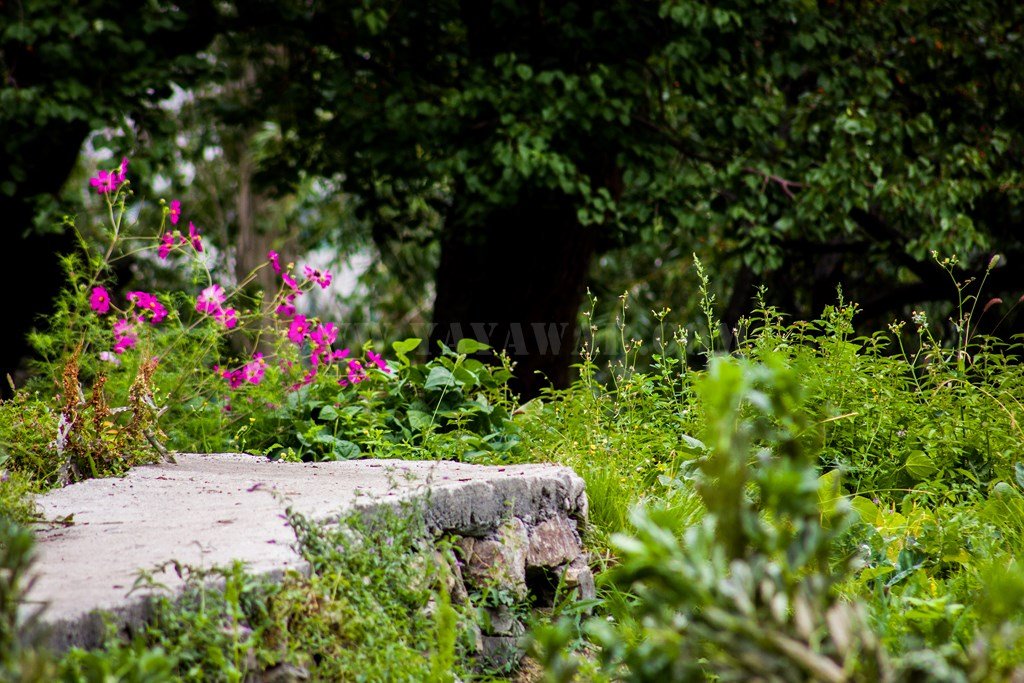
We move ahead and see kids assembled in lines. There is a primary school here. For secondary and high, they have to go down the valley to the school near the river.

Ghulam informs that on occassion of navroz (around 21st March), this ground is used for festivities, which include cock-fighting, traditional song and dance, with people dressed in traditional attire. It’s a good time to visit Turtuk. Wouldn’t it be covered in snow? We wonder. No! Actually, Turtuk being on lower altitudes, gets only a couple of inches of snow which is there from December to early February and then everything is as we see now!
We take a left from the school into the alleys of Turtuk village and the residential houses start. Some have basement kind of structure where donkeys are kept. Wonder how they’d be sleeping when it starts braying at night as the sound would be amplified here.
What we notice is the channelization of the glacial water, which seems to come from the Turtuk Lungpa.

Ghulam show us some low rise structures which are more like hutments. They all are locked. He asks us to put our hands in the structure through the crevices in the door and structure. It’s icy cold! Ghulam explains that this is their natural refrigerator! This has been created through channelization of the glacial waters and has been in use since hundreds of years to store meat, veggies and pashmina. What ingeniousness!
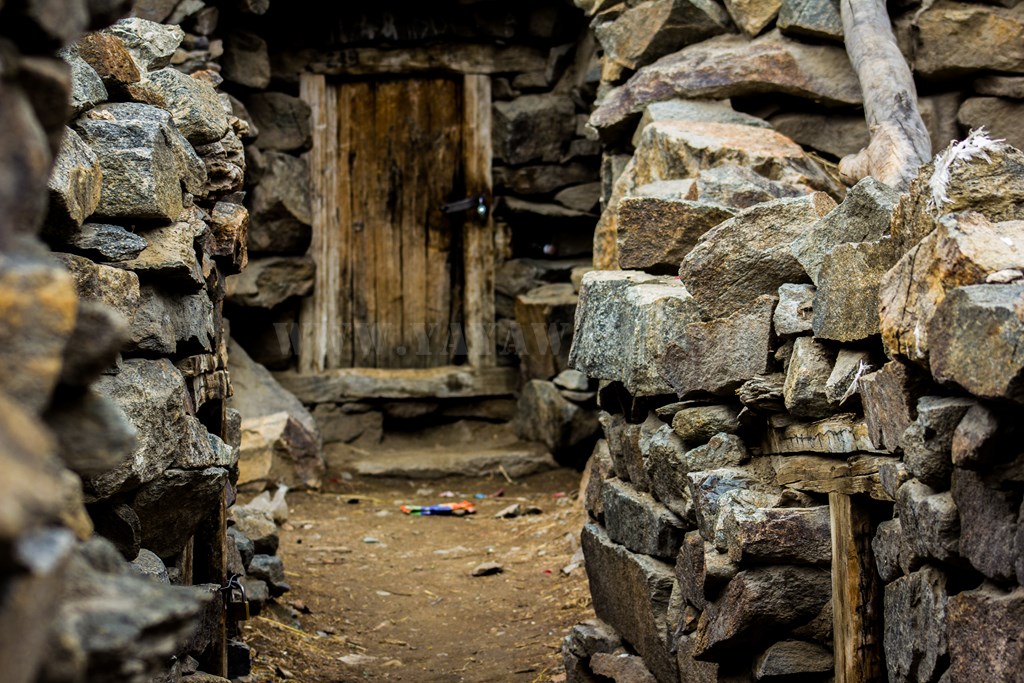
And then we see yet another ingenious use of water channelization – a flour mill! The grinder is run by the force of water, the flow of which is controlled from outside the structure and the channelized water is suddenly made to drop a couple of feet, thus generating the necessary force.

At the flour mill, we meet this little girl, who herself asks us to click photographs and show to her. We do oblige!

Further, we come across a mosque which has minarets entirely made of wood. This is from 16th century and still in use. Wonder whether ASI should know about this!
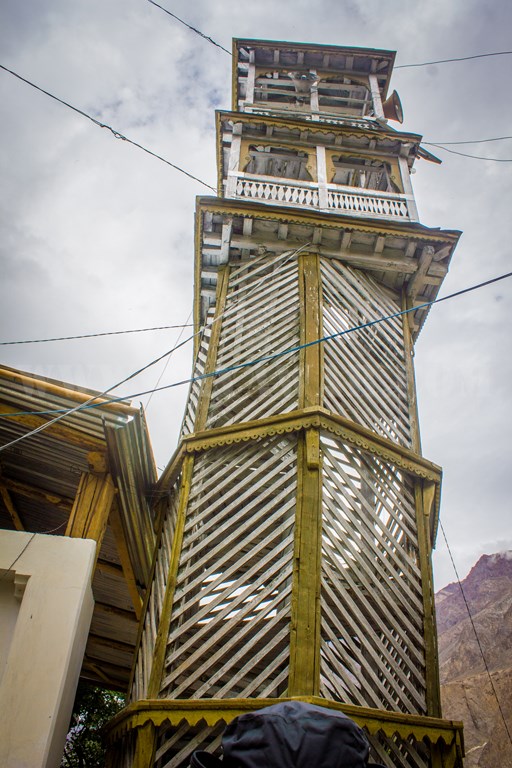
We then go to visit a palace of the Khan or Raja of Turtuk. The Khan of Turtuk, Mohammad Khan Kacho of the Yabgo Dynasty of Chorbat Khaplu is the full title. His “palace” is a handsome mansion with a balcony from where the Raja greeted his people. The Khan wasn’t at home when we visited, however, we were welcomed by his son, who is studying at a school at Srinagar. He is just in his teens born in 1998! He shows us around the place. There is a wooden plaque in the room, inscribed with his family genesis, dating back to 1,000 AD. Sadly, the Khan’s throne, and everything else of value was looted by Pakistani officers who were stationed here during the 1965 war.
Some pics…
The gate

Entrance

Carvings on the door panel. Apparently they were studded with gemstones which were looted
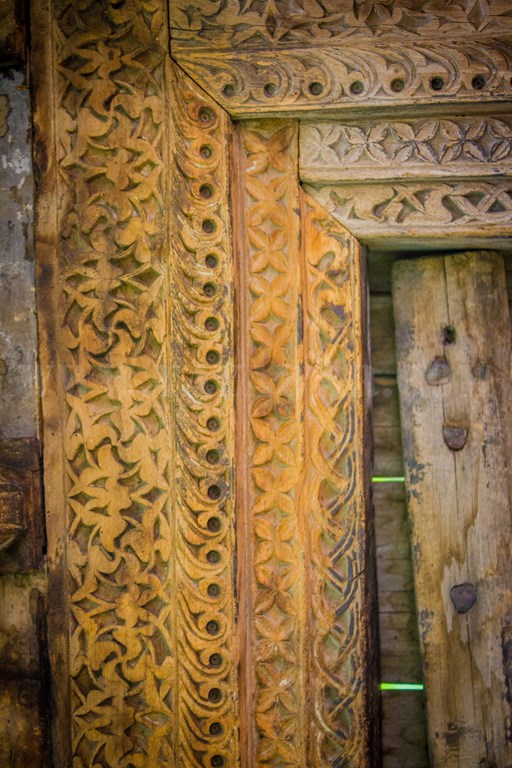
The genesis

We ask for a customary photograph, to boast of the fact that we met a prince!

We come out of the palace and then Ghulam points to the mountain on our left and asks us if we’re able to see a red flag.
Can you see it?
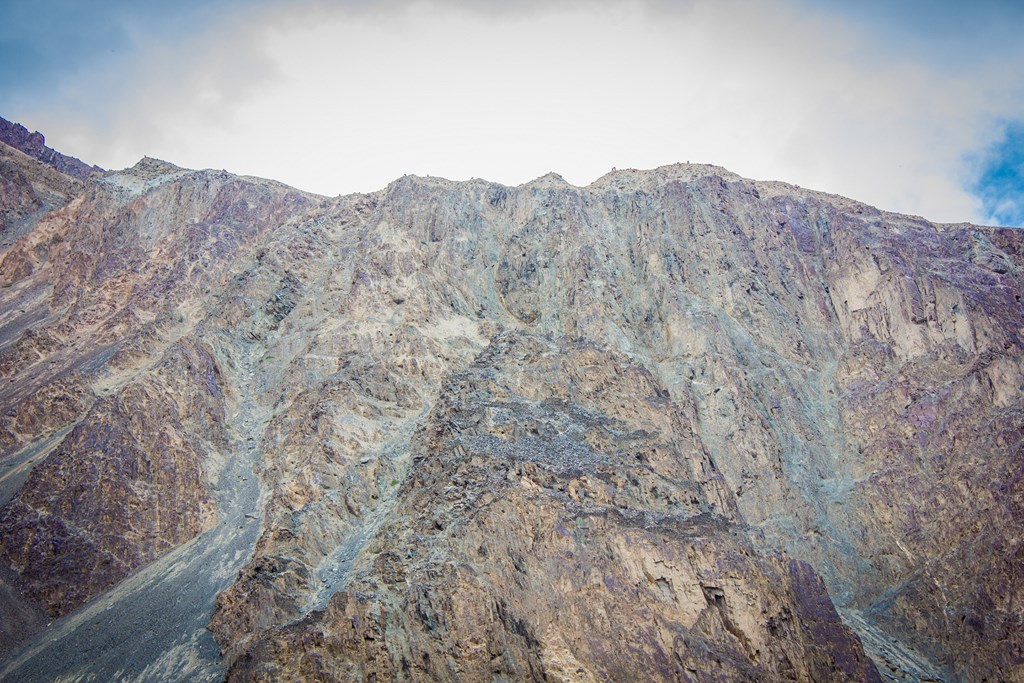
Zoom to 190 mm.. indeed there is a red flag!

Apparently, this is the place where the Raja used to sit when he had to oversee the entire region and address his pupil. Now, I wonder why would the Raja climb such heights, where he’d be barely visible or audible. But then Ok, I believe what Ghulam is stating as I don’t have any counter theory!
On return from the palace, we come across an under construction mosque. The unique thing about the construction was that there were no laborers. The entire population of Turtuk including the ladies were working there for the construction. Now we understand why Rahamatullah had excused himself in the morning.
We go ahead and see this little girl who is floating paper boats and almost about everything she can get hold of and can float in the little channelized stream

As we advance, the girl’s mother asks something to Ghulam in Balti language. Did we do anything objectionable? No! She’s asking whether you’d be interested in buying a walking stick made out of Ibex’s horns. Depends, let’s see it first. She takes out something this is transluscent and appears to be made of plastic. Is it real Ibex thingie? I have no way to know for sure. It has intricate carvings on it. The price? 6000 Rupees! I tell Ghulam to convey that we’re not foreigners and won’t be able to procure this at the price. Sorry, no bargain! She doesn’t allows a photograph to be taken.
We come across yet another school for kids

Seems that our tour of the village is ending. Ghulam asks if we are interested to visit the Turtuk Gompa and a waterfall which is further beyond the mountains. It will take another 3-4 hours for the tour. We have to reach Diskit for the evening and it’s almost noon. So we convey and start descending through an alternate route. This route is better, stepped. We meet two soldiers who wanted to know how did we find the place. Quite good! However, they state that they want to leave from Turtuk as soon as possible. Difference of perspective perhaps!
Further, we see a blacksmith working, and then we see this:

Walking towards, the bridge, we meet and greet some village elderly

We also capture some horns and hoofs
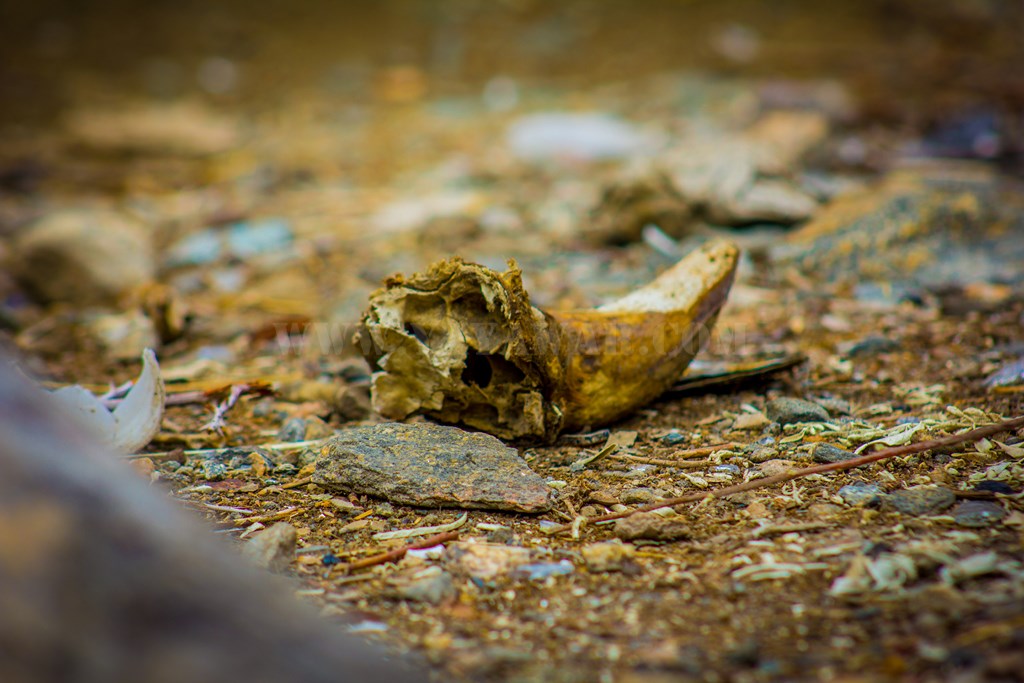

And finally we approach the bridge. It’s a wooden structure hanging on steel wires. Of course a picture moment

The Turtuk Lungpa from the bridge.

This stream separates the village in two and we’ve just visited one part of the village. So there’s more, but now we are loosing time. We have to go,
Apricots being laden on trucks
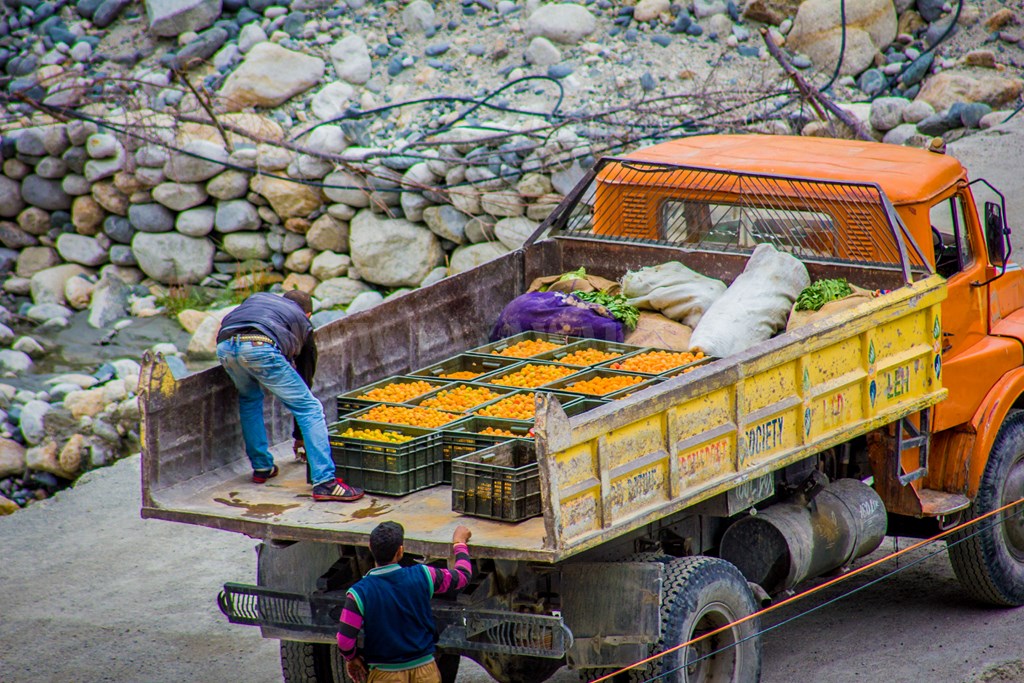
We descend down the bridge and again got winded with the beauty of the Turtuk Lungpa. Some final parting shots


So many pics of the stream? Yes! I’m in awe of it!!
We reach the Holiday Camp and ask Ghulam to arrange for a tea while we settle the bill. Some ladies are in the campus. They’ve come to get cement bags to take them to the under construction mosque. Every one of the ladies takes one bag in their basket and goes uphill on the same path that we took! Phew!! To think that we were panting like dogs halfway up!!!

Finally, some apricots that we plucked.

Settling our bill, we hop on to the Cheetah and drive on our journey. The watch reads 1200 hrs…
CONTD…





Hello! I could have sworn I’ve been to your blog before but
after going through a few of the articles I realized it’s new to me.
Nonetheless, I’m definitely happy I found it and I’ll be bookmarking it and checking back frequently!
It’s very effortless to find out any topic on net as compared to books,
as I found this piece of writing at this site.
Excellent blog! Do you have any recommendations for
aspiring writers? I’m planning to start my own website soon but
I’m a little lost on everything. Would you suggest starting with a free platform like
Wordpress or go for a paid option? There are so many options
out there that I’m totally overwhelmed .. Any tips? Appreciate it!
To start with, WordPress is a good option, provided you like and use one of the themes provided. Try it first. Once you’ve graduated through it and want enough flexibility with design elements, you can go for a self-hosted version.